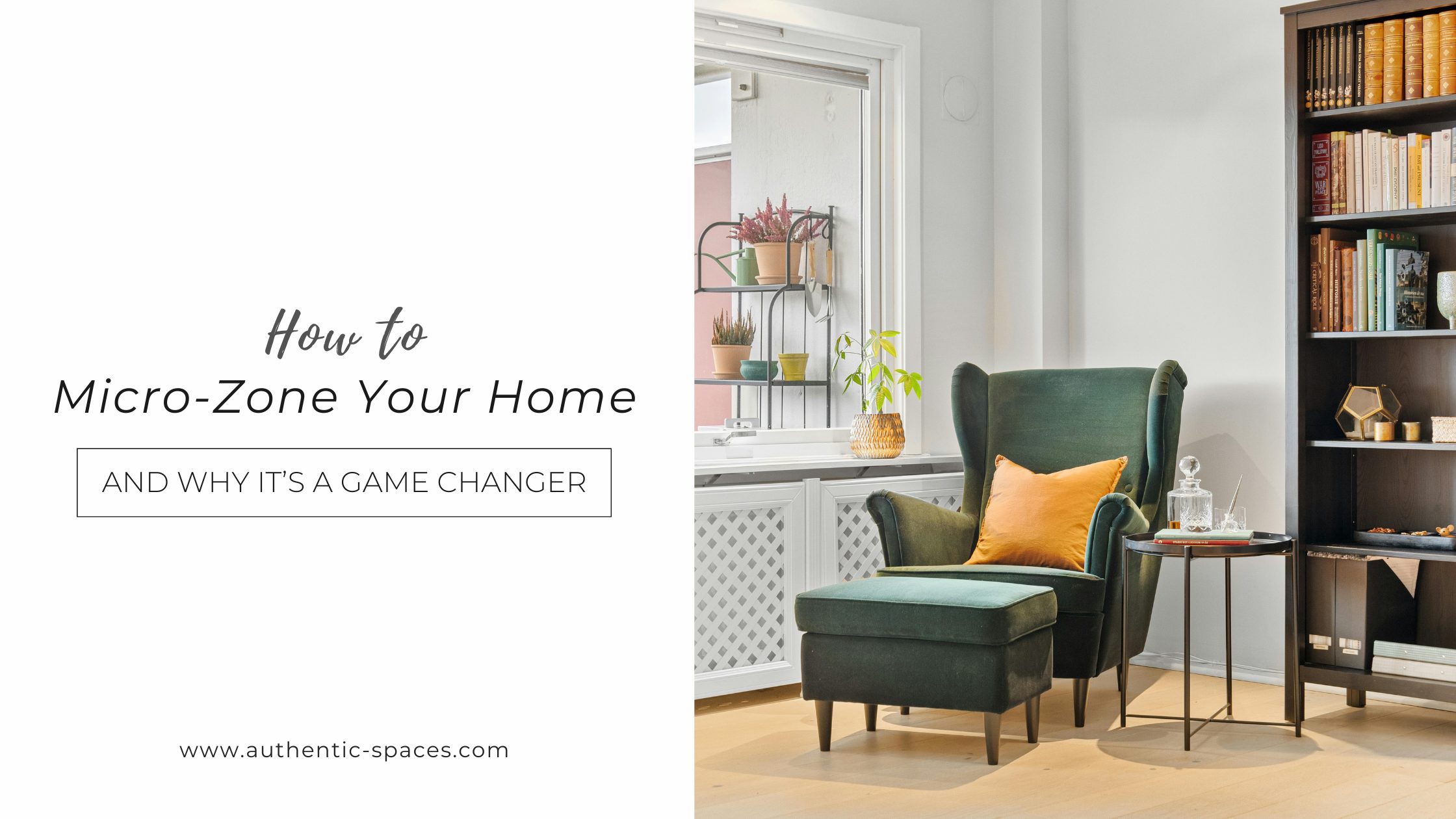If your home has ever felt like one big blur of clutter, chaos, and “where do I even put this?!” energy, you’re not alone. The good news? You don’t need to knock down walls or buy all new furniture to make your home feel more functional. Enter: micro-zoning.
Micro-zoning is one of my favorite interior design tricks right now. It’s all about creating intentional little zones within your home—even within the same room—that serve specific purposes. It helps your space feel more organized, more useful, and honestly, way more cozy. And the best part? It works in homes of any size.
Ready to rethink your space without a full-blown renovation? Let’s talk micro-zoning.
What Is Micro-Zoning, Exactly?
Think of micro-zoning like giving each corner of your home a job. Instead of one big open room trying to do everything at once, you create smaller zones that each have their own vibe and purpose. For example:
- A cozy reading corner in your living room (just a chair, lamp, and small table)
- A coffee station in the kitchen
- A mini homework nook carved out of an underused hallway
- A drop zone by the door for keys, shoes, and bags
These little moments of intention can totally change how your home functions day to day.
Why Micro-Zoning Works
- It adds function to every inch of your home—no more wasted space.
- It helps reduce clutter by giving items a designated spot.
- It makes shared spaces feel calmer, especially in open-concept homes.
- It helps you focus, especially if you work or study at home.
Easy Micro-Zones to Try at Home
- The Morning Station: A little corner in the kitchen with your coffee maker, mugs, and a cute tray.
- The Wind-Down Zone: A small space with a comfy chair, blanket, and bookshelf—aka your escape.
- The Kid Zone: A basket of toys and a play mat tucked in a corner keeps things contained and still accessible.
- The Entry Drop Zone: Hooks for bags, a bench for shoes, and a tray for keys make all the difference.
- The Pet Station: A tidy spot for bowls, treats, and leashes.
Tips to Make It Work
- Use rugs, lighting, or furniture placement to visually separate zones.
- Keep it simple! You don’t need to buy a bunch of stuff.
- Think about your routines and create zones that support them.
- Don’t forget vertical space—wall hooks, shelves, and pegboards are your best friends.
The Bottom Line
Your home doesn’t have to be big to feel spacious—it just needs to be smart. Micro-zoning helps your space work harder for you, without the cost or stress of a renovation.
Whether you live in a tiny apartment or a big family home, this is one design trick that can truly transform how you live in your space.
(And yes, your future self will thank you when your keys are exactly where they’re supposed to be.) Have questions on how you can micro-zone your specific space? Let’s connect!

 Facebook
Facebook
 X
X
 Pinterest
Pinterest
 Copy Link
Copy Link


